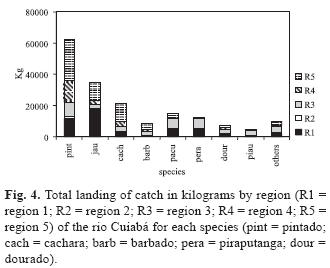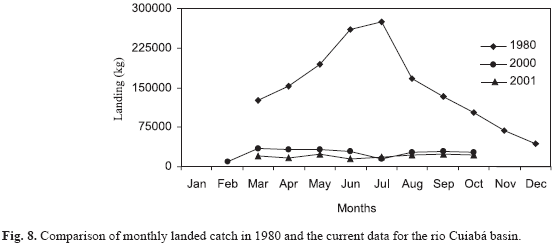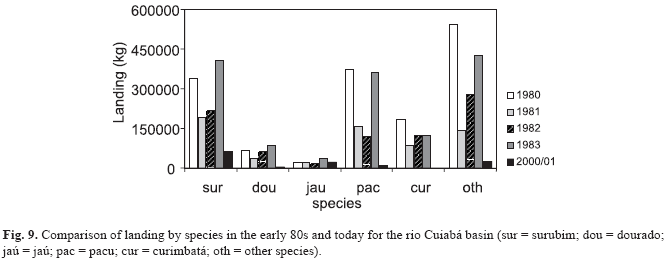The rio Cuiabá is one of the most important tributaries of the upper rio Paraguay basin that form the Pantanal wetlands. The fishing resources of the rio Cuiabá basin were studied based on landing data obtained from the Fish Market of the city of Cuiabá, State of Mato grosso, Brazil. A description is given of the composition and origin of the 2000 and 2001 catch. The rio Cuiabá is the main source of fish for Cuiabá, although some fish sold locally comes from the rio Paraguay. The 2000-2001 catch consisted mainly of migratory species. The main landed species were the pimelodids pintado -Pseudoplatystoma corruscans, cachara -Pseudoplatystoma fasciatum, and jaú -Paulicea luetkeni, and the characiforms pacu -Piaractus mesopotamicus, piraputanga -Brycon microlepis, piavuçu -Leporinus macrocephalus, and dourado -Salminus brasiliensis. Large catfishes (Pimelodidae) represented 70% of the landed fish, among which pintado was the most abundant. The data indicate that current catches are smaller than those recorded in the early 1980s and fish are caught far off the urban zone. Moreover, although the number and composition of species caught were similar to those of the 80s, the distribution of species abundance has changed. Currently, fisheries catch more carnivorous species than fish from lower trophic levels. These findings cannot be credited solely to overfishing, but appear to result from a complex interaction of factors, i.e., environmental degradation, changes in market preferences, and restrictive legal fishing regulations.
fishery management; aquatic resource; freshwater fisheries











